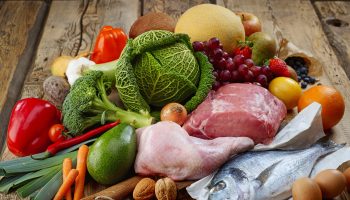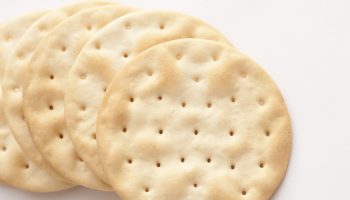Healthy eating is not about strict dietary limitations, staying unrealistically thin, or depriving yourself of the foods you love. Rather, it’s about feeling great, having more energy, improving your health, and stabilizing your mood. If you feel overwhelmed by all the conflicting nutrition and diet advice out there, you’re not alone. It seems that for every expert who tells you a certain food is good for you, you’ll find another saying exactly the opposite. But by using these simple tips, you can cut through the confusion and learn how to create a tasty, varied, and nutritious diet that is as good for your mind as it is for your body.
Contents
- 1 Healthy Diet Plan for Women
- 2 Healthy Diet Plan for Men
- 3 Keys to a Healthy Diet
- 3.1 Consume a Variety of Foods
- 3.2 Keep an Eye on Portions
- 3.3 Eat Plenty of Produce
- 3.4 Get More Whole Grains
- 3.5 Limit Refined Grains, Added Sugar
- 3.6 Enjoy More Fish and Nuts
- 3.7 Cut Down on Animal Fat
- 3.8 Shun Trans Fats
- 3.9 Don’t Worry About Cholesterol
- 3.10 Keep Sodium Down, Potassium Up
- 3.11 Watch Your Calcium and Vitamin D
- 3.12 Choose Food Over Supplements
- 3.13 Be Aware of Liquid Calories
- 3.14 Limit Alcohol
- 3.15 Enjoy Your Food
Healthy Diet Plan for Women
A balanced diet is a cornerstone of health. Women, like men, should enjoy a variety of foods, such as whole grains, fruits, vegetables, healthy fats, low-fat dairy and lean protein. But women also have special nutrient needs, and, during each stage of a woman’s life, these needs change.
Eating Right
Nutrient-rich foods provide energy for women’s busy lives and help to prevent disease. A healthy daily diet includes:
- At least three 1-ounce servings of whole grains such as whole-grain bread, cereal, pasta, brown rice or oats.
- Three servings of low-fat or fat-free dairy products including low-fat or fat-free milk, yogurt or cheese.
- Five to 6 ounces of protein such as lean meat, chicken, turkey, fish, eggs, beans or peas and nuts.
- Two cups of fruits — fresh, frozen or canned without added sugar.
- Two-and-a-half cups of colorful vegetables — fresh, frozen or canned without added salt.
Iron-rich Foods
Iron is one of the keys to good health and energy levels in women. Iron-rich food sources include red meat, chicken, turkey, pork, fish, kale, spinach, beans, lentils and fortified breads and cereals. Plant-based sources of iron are more easily absorbed by your body when eaten with vitamin C-rich foods. So eat fortified cereal with strawberries on top, spinach salad with mandarin orange slices or add tomatoes to lentil soup.
Folic Acid During the Reproductive Years
When women reach childbearing age, they need to eat enough folic acid to decrease risk of birth defects. The requirement is at least 400 micrograms of folic acid a day. Be sure to consume adequate amounts of folic acid daily from fortified foods or supplements, in addition to food forms of folate from a varied diet. Citrus fruits, leafy greens, beans and peas naturally contain folate. There are many folic acid fortified foods such as cereals, rice and breads.
Daily Calcium Requirements
For healthy bones and teeth, women need to eat a variety of calcium-rich foods every day. Calcium keeps bones strong and prevents osteoporosis, a bone disease in which the bones become weak and break easily. Some calcium-rich foods include low-fat or fat-free milk, yogurt and cheese, sardines, tofu (if made with calcium sulfate) and calcium-fortified foods including juices and cereals.
Foods to Limit
To keep weight in check at any age, women should avoid a lot of excess calories from added sugars, fat and alcohol.
- Limit regular soft drinks, sugar-sweetened beverages, candy, baked goods and fried foods.
- Limit alcohol intake to one drink per day. One drink is equal to 12 ounces of beer, 5 ounces of wine or 1.5 ounces of liquor.
- Opt for low-fat dairy and meat products instead of their full-fat counterparts.
Eat fewer foods that are high in saturated fat — the kind found in fatty meats, sausages, cheese and full-fat dairy products, baked goods and pizza.
Balancing Calories with Activity
Since women typically have less muscle, more fat and are smaller than men, you need fewer calories to maintain a healthy body weight and activity level. Moderately active women need 1,800 to 2,200 calories a day. Women who are more physically active may require more calories.
Exercise is an important part of a woman’s health. Regular daily activity helps with weight control, muscle strength and stress management.
Healthy Diet Plan for Men
If you analyzed every “popular” weight-loss plan ever created, they’d all seem to have similar strategies – usually involving eating less, blaming certain foods for your problems, or prescribing “cheap” approaches that over-promise on results.
While these approaches can work in the short term, they’re usually not sustainable because the plan is so strict you almost feel like you’re a prisoner to your dietary warden.
Breakfast
- 5 eggs (2 palm-sized portions)
- 1 cup (1 fist-sized portion) of spinach
- 1/2 cup (1 cupped handful) of old-fashioned oats
- 1/2 cup (1 cupped handful) mixed berries
- 1 tbsp (1 entire thumb) chopped walnuts
- 1 glass water/green tea/black coffee
Lunch
- 8 ounces (2 palm-sized portions) of chicken
- 2 cups (2 fist-sized portions) mixed greens
- 1 cup (1 fist-sized portion) chopped carrots and cucumbers
- 1/2 cup (1 cupped handful) black beans
- 2 tbsp (2 entire thumbs) guacamole
- 1 glass water/green tea/black coffee
Mid-Afternoon Snack
- 2 scoops (2 palm-sized portions) protein powder
- 1 cup (1 fist-sized portion) pumpkin
- 1 cup (1 fist-sized portion) spinach
- 1/2 cup (1 cupped handful) old-fashioned oats
- 2 tbsp (2 entire thumbs) chopped walnuts
- 8 ounces unsweetened vanilla-almond milk
- Ice cubes as desired
Dinner
- 8 oz (2 palm-sized portions) of wild salmon
- 2 cups (2 fist-sized portions) of zucchini
- 1 tbsp (1 entire thumb) of extra-virgin olive oil
- 1 medium (2 cupped handfuls) sweet potato
- 8 oz water
Totals
Calories: 2,257
Protein: 216g
Carbs: 157g
Fiber: 48g
Fat: 85g
Staying On Track
The most common question we receive is: “How do I know if it’s working?” Well, your strategy should be based on what your body weight is doing and what you’re seeing in the mirror. On this plan, you can expect to lose about 2 to 3 pounds per month.
However, keep an eye on things to determine if you need adjustments. If you’re losing weight too quickly, simply eat a bit more by increasing your calories/portion sizes. And if you’re gaining weight (or not losing at all), simply eat a bit less by decreasing your calories/portion sizes.
Over time, you will have to adjust. Based on preferences, based on variety and based on your results. That’s the beauty with a flexible approach to nutrition: There are unlimited variations.
Keys to a Healthy Diet
Developing healthy eating habits isn’t as confusing or as restrictive as many people imagine. The essential steps are to eat mostly foods derived from plants—vegetables, fruits, whole grains and legumes (beans, peas, lentils)—and limit highly processed foods. Here are our guidelines for building a healthy diet.
Consume a Variety of Foods
Not all the nutrients and other substances in foods that contribute to good health have been identified, so eating a wide assortment of foods helps ensure that you get all of the disease-fighting potential that foods offer. In addition, this will limit your exposure to any pesticides or toxic substances that may be present in a particular food.
Keep an Eye on Portions
Sure, you can eat all the broccoli and spinach you want, but for higher-calorie foods, portion control is the key. In recent years, serving sizes have ballooned. In restaurants, choose an appetizer instead of an entree or split a dish with a friend. Don’t order anything that’s been “supersized.” When reading food labels, check serving sizes: some relatively small packages claim to contain more than one serving, so you have to double or triple the calories, grams of fat and milligrams of sodium if you’re planning to eat the whole thing.
Eat Plenty of Produce
Aim for 2½ cups of vegetables and 2 cups of fruit a day, for a 2,000-calorie diet. If you consume more calories, aim for more; if you eat fewer than 2,000 calories, you can eat less. Include green, orange, red, blue/purple and yellow produce. The nutrients, fiber and other compounds in these foods may help protect against certain types of cancer and other diseases. Legumes, rich in fiber, count as vegetables, though are moderately high in calories. Choose whole fruits over juice for more fiber. Frozen and canned fruits and vegetables are good options.
Get More Whole Grains
At least half your grains should be whole grains, such as whole wheat, barley and oats. Whole grains retain the bran and germ and thus all (or nearly all) of the nutrients and fiber of the grain. Look for a product labeled “100% whole wheat” or “100% whole grain.” If it doesn’t say that, look for a whole grain listed as the first ingredient, though there still may be lots of refined wheat (also called “white” or “enriched” flour) and/or sugar. Another option is to look for the voluntary “Whole Grain Stamp” from the Whole Grains Council.
Limit Refined Grains, Added Sugar
The refined carbohydrates in white bread, regular pasta and most snack foods have little or no dietary fiber and have been stripped of many nutrients. On food labels, watch out for “wheat flour” (also called “white,” “refined” or “enriched” flour) on the ingredients list. Also, limit foods with added sugar, such as soda and candy. These are sources of empty calories that contribute to weight gain. Many sugary foods are also high in fat, so they’re even more calorie-dense.
Enjoy More Fish and Nuts
Nuts, fatty fish, avocados and vegetable oils supply healthy unsaturated fats. Recent research suggests these foods, though high in calories, tend not to promote weight gain because they are satisfying. Still, it’s best to eat them in place of other high-calorie foods. For instance, substitute olive or canola oil for butter. Fatty fish helps reduce heart disease risks and has other benefits, largely because of its omega-3 polyunsaturated fats.
Cut Down on Animal Fat
Saturated fats, especially from red meat and processed meat, boost LDL (“bad”) cholesterol. To limit your intake, choose lean meats, skinless poultry and nonfat or low-fat dairy products. It’s also a good idea to replace saturated fats with “good” fats, found in nuts, fish and vegetable oils, not with refined carbohydrates such as white bread and snack foods.
Shun Trans Fats
Trans fats are supplied by partially hydrogenated vegetable oils used in many processed foods (such as commercial baked goods, snack foods and stick margarines) and fast foods (such as French fries). Trans fats raise LDL (“bad”) cholesterol and also reduce HDL (“good”) cholesterol, increasing the risk of heart disease. Since 2006, when a trans fat labeling law went into effect, many food makers have eliminated or greatly reduced these fats in their products.
Don’t Worry About Cholesterol
Though a 300-milligram daily cap on cholesterol intake has long been advised, there’s abundant evidence that cholesterol in food has little, if any, effect on blood cholesterol in most people. Thus, many experts no longer recommend limiting dietary cholesterol (found only in animal foods, notably eggs and shrimp). The best way for most people to lower their blood cholesterol is to reduce saturated fats (as in meats) and trans fats (from partially hydrogenated oils in processed foods). A possible exception is people with diabetes, who should talk to their doctor about their overall diet.
Keep Sodium Down, Potassium Up
Excess sodium raises blood pressure in many people and has other harmful effects. People over 50, blacks and those with hypertension, diabetes or chronic kidney disease—that’s most adults—should limit sodium to 1,500 milligrams a day (about two-thirds of a teaspoon of salt). Everyone else should aim for less than 2,300 milligrams a day. At the same time, consume more potassium, which lowers blood pressure. Potassium-rich foods include citrus fruits, bananas, potatoes, beans and yogurt.
Watch Your Calcium and Vitamin D
These nutrients are vital for bone health. Get calcium from low-fat or nonfat dairy products and fortified foods such as some orange juices and soy drinks. If you can’t get 1,000 to 1,200 mg a day from foods, take a calcium supplement. It’s hard to consume enough vitamin D from foods, and getting it from sunlight is risky. Many people—especially those who are over 60, live at northern latitudes or have darker skin—may need a D supplement (800 to 1,000 IU a day).
Choose Food Over Supplements
Supplements cannot substitute for a healthy diet, which supplies countless other potentially beneficial compounds besides vitamins and minerals. Foods also provide the “synergy” that many nutrients require to be efficiently used in the body. Still, for many people a basic multivitamin/mineral pill can provide some of the nutrients they may fall short on. In addition, many people need calcium as well as vitamin D supplements to meet recommended intakes.
Be Aware of Liquid Calories
Beverages supply more than 20 percent of the calories in the average American’s diet. Some liquid calories come from healthy beverages, such as milk and 100 percent fruit juice. But most come from soda and other sweetened beverages and alcoholic drinks, which have lots of calories yet few, if any, nutrients. Soft drinks are a major source of sugar and calories for many Americans, especially children. Though juice is more nutritious than soft drinks, it’s also high in calories, so most people should drink no more than one cup a day.
Limit Alcohol
If you drink, do so in moderation. That means no more than one drink a day for women, two a day for men. Older people should drink even less. A drink is defined as 12 ounces of beer, 5 ounces of wine, or 1½ ounces of 80-proof spirits. While alcohol in moderation has heart benefits, higher intakes can lead to a wide range of health problems. Even moderate drinking impairs your ability to drive and may increase the risk of certain cancers. Some people, including pregnant women and those who have certain medical conditions, should avoid alcohol altogether.
Enjoy Your Food
Be mindful of what you eat, which may help you eat less and enjoy your food more. Many cultures around the world emphasize the enjoyment of food, which often includes cooking and eating with others, as an integral ingredient to good health. Even our own Dietary Guidelines for Americans touch on the idea that eating healthfully involves “enjoying food and celebrating cultural and personal traditions through food.” According to some research, shared mealtimes, especially during childhood, may act as a “protective factor” for many nutrition health-related problems as well as increase prosocial behavior in adulthood.






